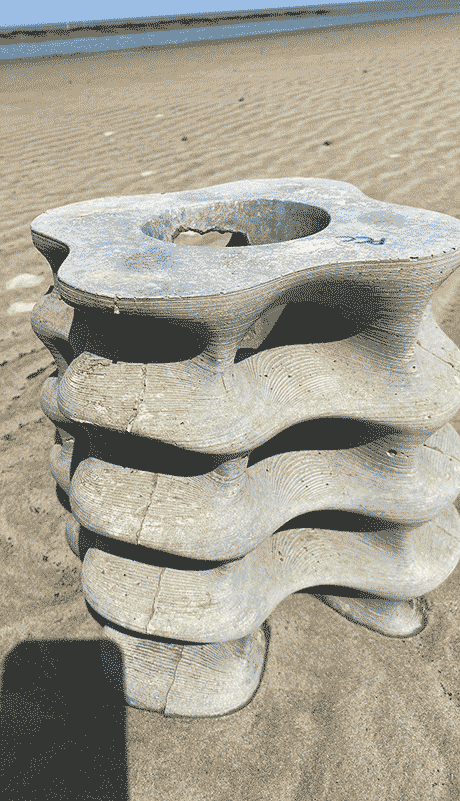The U.S. Air Force is using specially designed structures placed in the waters of St. Andrew Bay to attract oysters. The hope is that the oysters will attach to the structures, forming a type of living concrete reef that can protect nearby Tyndall U.S. Air Force Base from hurricanes and tidal surges.
The reef is meant to be like self-healing concrete and was designed by Rutgers University before being placed within shallow water off the coastline. A crane lowered the first segment of what will become a 160-foot-wide reef, which will feature roughly 800 interconnected cubes of concrete.

The structures that make up the foundation of the living concrete reef are designed with a wavelike pattern that should cause oysters to naturally gravitate to them. Then, once the oysters attach themselves to the concrete, they’ll form a resilient hybrid reef that, when damaged, will repair itself by attracting more oysters to fill in the holes and make the concrete stronger.
The Air Force is testing the reef to see if it will indeed work the way that researchers and engineers say it will. Earlier this year, Hurricane Michael, a Category 5 hurricane, hit Florida, devastating the coastline. It did quite a bit of damage to the hangers found at the base, and the Air Force is hopeful that this experiment will help make the shoreline more robust.
The entire idea is based on the way that oysters come together to build natural seawalls in shallow water. They gather together on rocks and other things and then expand over time. This happens because oysters grow in clusters, not just as individual animals, by attaching to one another. By combining the structures and the natural clustering behavior that oysters rely on, researchers hope they’ll be able to create a reproducible living concrete reef.








